Here is post I originally posted over at Constant Change Media.
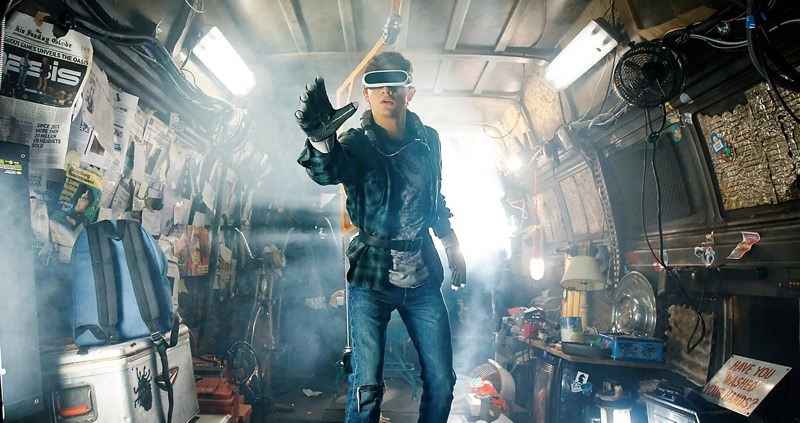.jpg)
With the ever accelerating buzz around blockchain, cryptocurrencies and altcoins, I have been studying Elliot Wave theory – an almost century old set of analytical tools used to study social principles and their dynamics insofar as they affect trading of commodities. This, along with the now colloquial Fibonacci retracement tool (based on work by Princeton economist Burton Malkiel), has recently been adopted by the so-called “crypto” community to determine when to buy and sell these extraordinarily volatile digital currencies, which still reliably follow the principles he posited, in response to the observations of Charles Dow that the markets moved in human-response patterns.
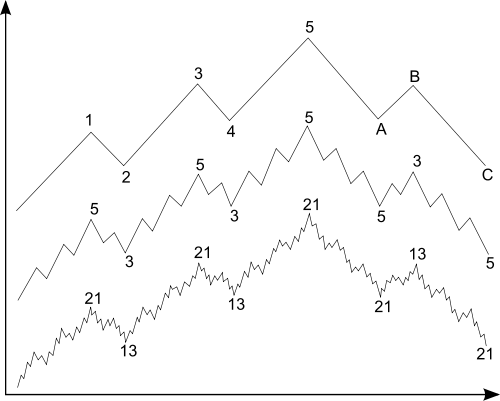
An example of an Elliot wave theory courtesy commons wikimedia.org
What does this all have to do with Virtual and Augmented Reality? The fact that in spite of market hype, naysayers, startups, mergers and holiday sales shortfalls, the hype and growth of VR and AR continue on a pattern of growth that seems to follow the same logic. From the early rise in 2013 around the mythic Kickstarter campaign launched by the media avatar Palmer Luckey, to the correction and subsequent rise of excitement in the prematurely designated “Year of VR” that was 2016, further pumped by the startling disruption of Pokemon Go (more of a geolocation game than an AR one), which subsequently nosedived/corrected/found major resistance in 2017 as investors cooled slightly and hardware companies readjusted, slashed prices and refactored their marketing approach.
As 2017 came to a close the flagship titles started to ship – Doom VFR, Fallout 4, Skyrim dropped from giant Bethesda/Zenimax (who famously sued Facebook/Oculus/Luckey/Carmack/Zuckerberg and won a $500 million judgement). Sony’s PSVR posted sales in the millions and Oculus/Facebook and HTC both announced standalone, tetherless, all-in-one units (the Go, and Focus, respectively). Sure, HTC’s version would only ship in China, and the Go wouldn’t arrive until Q2 of 2018, but what a year it is shaping up to be.
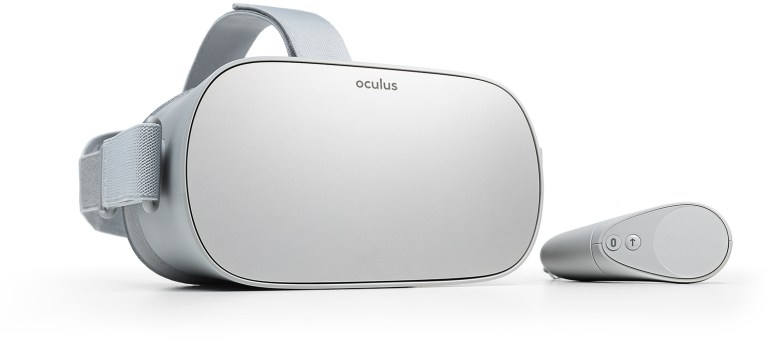
The all-in-one, tetherless, standalone “Go” Virtual Reality headset from Oculus/Facebook
Ready Player One?
With the first 7-figure deal landed for an original VR IP at Sundance 2018, the huge buzz around Black Mirror season 4 which heavily focused on VR and AR themes – however dystopian – and Steven Spielberg’s Ready Player One tentpole imminent, awareness around VR is about to surge like the 5th point in an Elliot wave pattern. Would mean that there will be a correction – probably because people will overdose on the marketing and wish to see the actually practical usage that is so important to making adoption real.
Also user “tehPeteos” made an excellent point on reddit.com/r/oculus:
..assuming of course the miner tax is dropped from GPUs; until then, nothing'll hold back adoption rates like 'I can't afford a GPU to run this."
This is very true and quite possibly what would form part of the resistance and the correction that is a natural part of the pattern. However, I believe that policies will be put into place, specialized cards launched for cryptomining, other more VR specific, and that this will eventually sort itself out. This sort of challenge is exactly, in fact, what the VR industry needs – it sharpens the stick. Moreover, the all-in-ones will mitigate this problem, and as pointed out in the comments of that thread, older cards (even going back to the venerable GTX 770 from Nvidia) are managing to keep up with most contemporary VR experiences, while not being of much interest to those solving for Bitcoin.
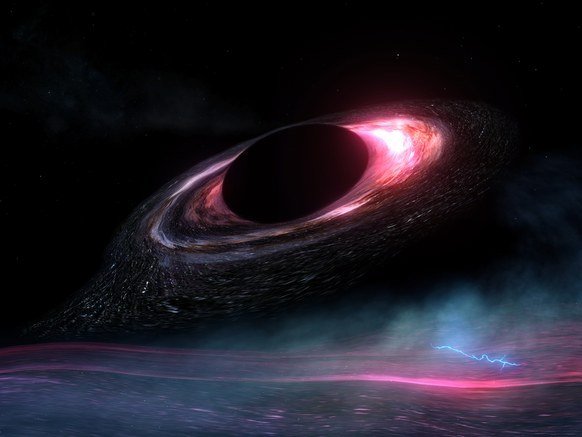
Spheres VR starring Jessica Chastain scored a 7-figure deal at Sundance 2018
CES 2018 had strong showing for Virtual and Augmented Reality, with one of the highlights being HTC Vive stepping up to the new Pro; a much higher resolution screen, improved glass, audio and tetherless solution. Location-based companies were abundant too – from NMerso/VirtualWare (Mexico/Spain), to Optitrack, to Hologate at VR Fest, and dozens of other companies showing early prototypes for multi-user, tetherless solutions, including Vive. The virtual digital assistant was everywhere – Alexa, Home, Cortana, Siri and their slower younger cousin Bixby. They will make their way into the HMDs and couple with the user’s data-mineable, rich history.
Let’s not also forget the rise of “inside out” tracking head-mounted displays; rather than setup cumbersome “lighthouse” and infrared scanners (like the HTC Vive and Oculus Rift), the HMDs come with a pair of built in front-facing cameras that are able to triangulate the users position. The entire line of Microsoft, misleadingly named “Mixed Reality” headsets from all the usual suspects, Acer, Lenovo, HP, Samsung, Asus are already price reduced, and, given sufficient light, work out of the box with any Windows computer, or power-laptop.
These too, will require new, targeted content – something that goes beyond zombie shooters and into the realm of boutique, emotion-driven narrative. Where are the Fellinis and Agnes Vardas? We need the Spike Jonzes, Sophia Coppollas and Greta Gerwigs. Wes Anderson is already in the game! This doesn’t mean linear, by the way, but rather, approaches that play to the strengths and opportunities of these new media.
In the spherical video space, Funique from Taiwan and Liveplanet are showing extraordinary end-to-end production pipelines as high resolutions with tremendous gains in fidelity and ease of use. At the prosumer level Vuze camera now supports live streaming stereoscopic, ambisonic spherical video for a thousand bucks, stitching included. This also includes an ecosystem of other cheap solutions like Ricoh Theta (now shooting 4k video), Samsung Gear360 and the Insta360 pop camera series. Again – the electricity around these latter products may not be there yet, but not everyone ran out and bought an RCA shoulder mount camcorder to shoot their home movies in the first decade either. The point is that when the resistance to telling stories in this fashion has been collapsed, the tech will be ready.
Technologies like Neurable will continue to push towards brain-piloted experiences, and haptic or multi-modal devices will reach maturation and come into the public sphere.
All Together Now
Besides the US, I have seen extraordinary pushes into the immersive technology sector from China, Australia, Taiwan, Spain, Mexico, South Korea, France, Chile, Norway, London, Germany and Canada (to name a few.) They are all looking for partners, feedback, distribution. There are so many new jobs that will be created and jobs for which we do not yet have names. Strange underground tech and ideas are brewing, offshoots of the cryptoscene, the DMT/Ayahuascan/McKenna renaissance, from AI (the NSFW and ethically and morally questionable but jaw-dropping /r/deepfakes scene) and computer vision (Jaunt and Magic Leap both posted job opportunities in the field this week that I write this) to the popularity of Tensorflow/Stack Override and machine learning.
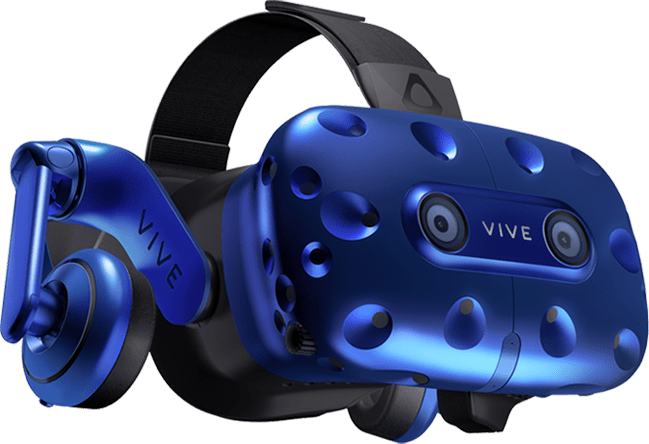.png)
HTC Vive Pro
Unity has natively incorporated Vuforia and its realtime cinema engine – Cinemachine along with Timeline evolves by the week. Apple is moving to ARKit 1.5 The mistakes of the past will be improved upon, the infrastructure is being laid down. Much like in the crypto world, there will be important and widespread use for the technology, but first the noise and snakeoil salesmen have to be cleared out, and the real work done. This genie cannot be put back into the bottle. The Elliot wave theory postulates that there will be five upward motive waves and three down. This makes sense because it is how some moves in a forward direction (the imbalance, biased toward the push). So even though we are likely to move into another period of correction, the cycle will return and raised even higher from where it was before.
The NAB show, also in Las Vegas, is another important touchstone in Q2 as the now-very technology-heavy expo merges Hollywood, Silicon Valley, broadcasters, policymakers, entrepreneurs, researchers from across the international community. It will be interesting to see, at this marker, whether the technologies and partnerships demonstrate continued exponential growth or a sideways crab crawl.
I know for a fact that many important players are about to come out of stealth mode and level up the whole playing field. This is not the time to short, this is the time to watch the market and buy in right before the hockey stick.
Updated 01/28/2018 to address reddit comments and rebuttal.!!
Congratulations @archkali! You have completed some achievement on Steemit and have been rewarded with new badge(s) :
Click on any badge to view your own Board of Honor on SteemitBoard.
For more information about SteemitBoard, click here
If you no longer want to receive notifications, reply to this comment with the word
STOPDownvoting a post can decrease pending rewards and make it less visible. Common reasons:
Submit
interesting stuff. i don't tend to look at charts so much, just go with what i feel people need and want. I think VR will have great future for experiences, learning, spirituality. I think AR will be the application, the real utility and accessibility. I guess maybe one day they will even merge into just one device.
Downvoting a post can decrease pending rewards and make it less visible. Common reasons:
Submit